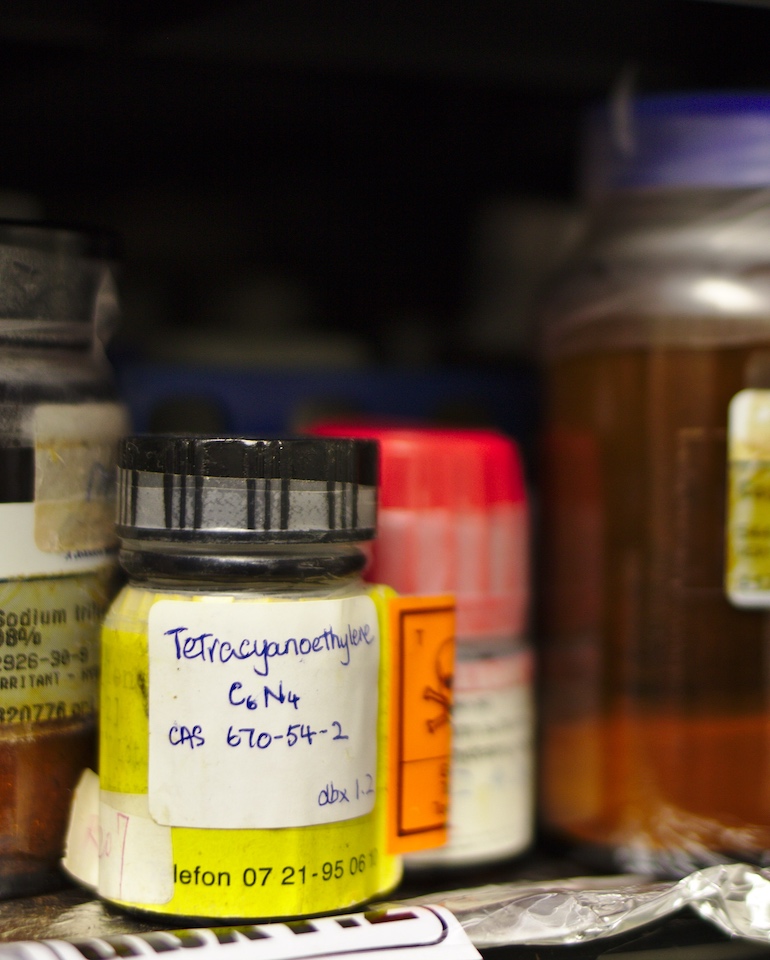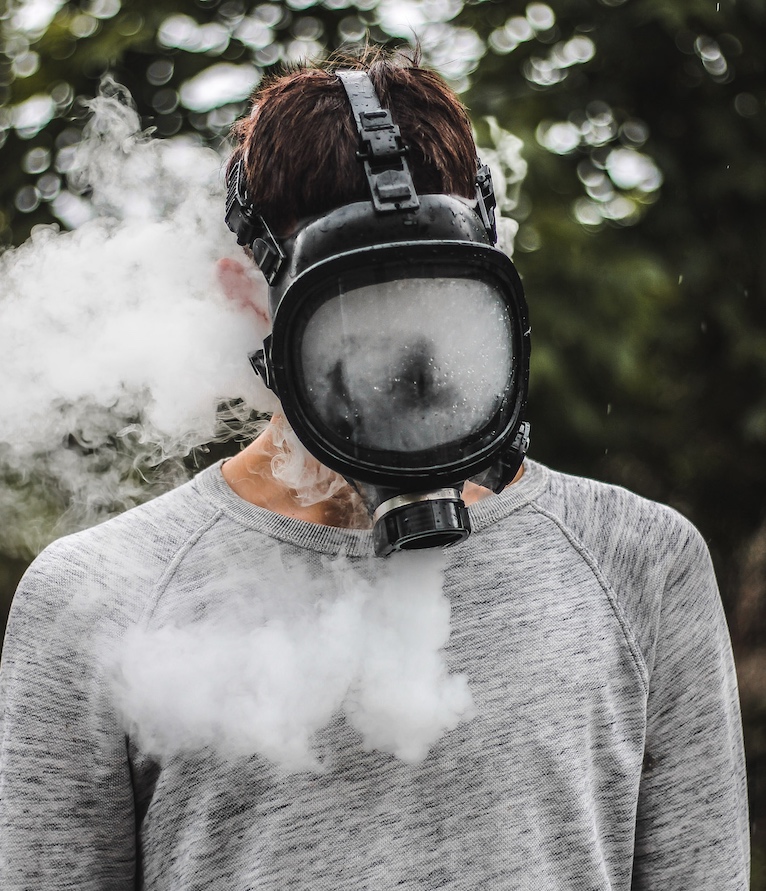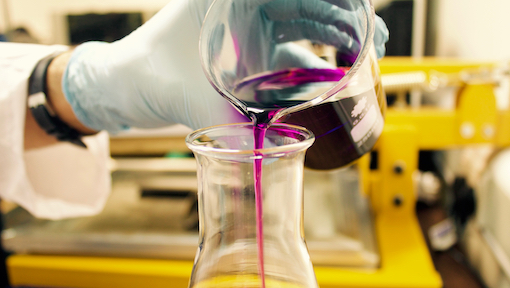Toxic wardrobe
Clothing says a lot about you. It is a visual bridge between you and other people. A way to say : “There, look : this is me ! ”
Beyond their practical function of covering your body, keeping you warm and making you feel protected, clothes are a social statement. We want our clothes to make an impact on others, there are a way to mark our place, a silent self-expression. Like a carefully curated statement, it is out there for everybody to see. But too often, the real impact of what we wear goes unnoticed. Fabric might not be the first thing that comes to mind when making changes in your lifestyle, but the chemicals used in the manufacturing process of your clothes make them a potential health hazard. Simply because these chemicals maybe absorbed by your skin or inhaled directly on end up in our waterways.
Whether you are a member of the zombie tribe that forages in the pile of clothes in the corner of the bedroom every morning, or on the OCD spectrum carefully preparing your folded clothes on the chair the evening before, what you wear has an impact on your well-being.
Points to remember:
- Your skin is the largest organ of elimination and absorption of your body
- What goes ON the skin goes IN the body. Toxins are absorbed through your skin and enter the blood stream
- Clothing manufacturers are under no legal obligation to disclose the chemicals used to treat and process garments
- Heat and humidity open your pores and increase chemical absorption
- Tight fitting clothing increases the likelihood of a skin reaction
What you wear has an impact on your health and well-being.
WHAT THE HECK IS PFC ?
Portsmouth Football Club ?
PFC does not stand for Portsmouth Football Club. No, I am talking about PFCs : Perfluorinated Compounds. These are nasties manufacturers rely on to make their fabrics repel water. These chemicals are used as surface protection to provide soil, stain, grease, and water resistance in products such as textiles and paper packaging. They are the same chemicals used to make nonstick cookware like Teflon®.
PFCs have been around since the 1950s, but we didn’t know a lot about their effects until early 2000, when scientists began releasing data on PFC toxicity.

Studies show that humans do not metabolize PFCs. In some cases it may take years for the human body to rid itself of PFCs. Some studies suggest that these substances may affect sex hormones and cholesterol in humans (ATSDR, Agency for Toxic Substances and Disease Registry, 2009).
The WWF (World Wildlife Fund) was already advising parents 15 years ago to check the content of children’s clothes (especially school uniforms) for PFCs and to choose natural fibers instead.
Late 2015, Greenpeace tested 40 items of clothing for PFCs from outdoor leading brands. They reported these chemicals as “still widely present” in the items they analysed.
Things are changing. In January 2016, Páramo, a small British brand became the first company in the outdoor industry to completely eliminate PFCs from its manufacturing process. Today, an online search for PFC-free clothing returns many more results than 5 years ago.
Beware of Scotchgard®, and GoreTex®
NPE?
Natural penis elargement ?
Nope : Nonylphenol ethoxylates
NPE is used in textile manufacture as a cleaning, dyeing and rinsing agent. It has been shown to act as an obesity enhancer and has also been associated with breast cancer. NPE chemicals are readily washed out of textiles and clothing, particularly during the first few washes.
The wide use of NPE in the textile industry was brought to light by Greenpeace in 2011. The study found 2/3 of the clothes they tested was positive for the presence of NPE (including items sold by big-name brands such as Adidas, H&M, Lacoste, and Ralph Lauren). Six months later the European Union agreed to ban NPE widely found in clothing.
REACH (Registration, Evaluation, Authorisation and Restriction of Chemicals) implemented new regulations. Companies now have until February 3, 2021 to remove the chemical from their products. The restriction will not apply to second-hand textile articles.
Even if you like the shinny new look of the garment, you definitely need to wash new clothes before you wear them to reduce body exposure to these toxic agents.


PPD ?
Postpartum depression ?
Mmmm, no… : it stands for Paraphenylenediamine
Paraphenylenediamine is a chemical found in black dye. Eliminating black dye from your life is incredibly hard. How can we let go off these slimming, stain-hiding, and classically chic clothes? But PPD can cause severe skin reactions especially in people who are susceptible to skin allergies.
Azo Dyes
Dyes make our world more colourful. Azo dyes is a type of dyes commonly used in textiles. They offer a range of vivid colours and do not run in the wash. Pretty, but unfortunately some Azo dyes are known to break down to carcinogenic compounds. The EU and several countries such as Canada and the United States have already limited the use of azo dyes in clothing.
Be on the safe side: stick to neutral colours.
FORMALDEHYDE ?
The use of Formoldehyde is most commonly associated with preserving corpses and is classified by the IARC (International Agency for Cancer Research) as a human carcinogen. Alarmingly, formaldehyde is widely used to coat textiles to give them a fresh unwrinkled appearance and prevent mildew. It is also used in certain dyes.
Most governments restrict formaldehyde. But tests done in New Zealand on Chinese-made clothes show that levels of formaldehyde in clothes from China can be up to 900 times higher than the safety limit.
Avoid “easy-care”, “stain-resistant”, “iron-free”, “permanent press”, or “wrinkle-free” clothing.


PHTHALATES ?
How do you pronounce that again?
Phthalates are linked with hormone disruption — such as reducing male sperm count. They are found in many clothes with plastic screen printed logos on. Also, many new shoes and clothes have a strong, plasticky smell which can indicate they are full of phthalates.
Think twice before parading around with branded clothing giving free publicity to companies that do not care about your health.
FLAME RETARDANTS?
The potential risks of some flame retardants have been known for some time. There is now more than enough research data to support not putting such potentially harmful compounds in clothes, especially in children’s clothes like pyjamas.
Make sure your fire alarm has good batteries, it is a better way to keep you safe.

There are some simple measures you can take to reduce toxic exposure to chemicals used in clothing:
* Avoid no-iron, wrinkle free and preshrunk items
* Wash and dry new clothes a couple of times before wearing
* Forget dry cleaning
* Stick to neutral colours
* Ask brands about their commitments to your health
